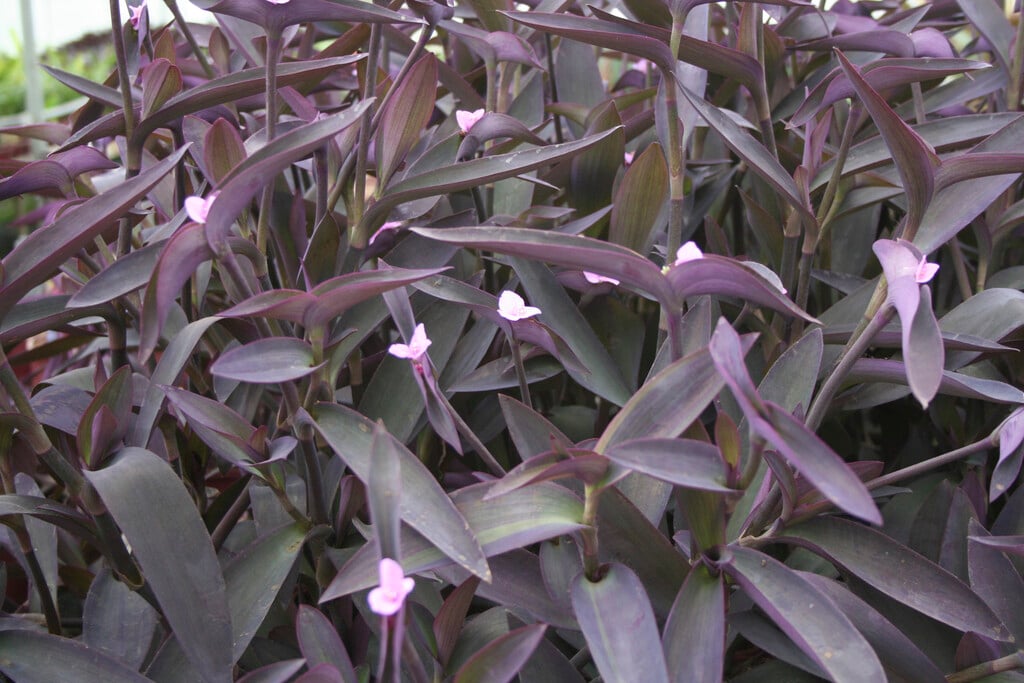Tradescantia pallida 'Purpurea'
purple spiderwort
A trailing evergreen perennial to 20cm in height, the purple stems with narrowly elliptic, purplish glaucous green leaves 8-15cm in length, bright purple beneath, and terminal bright pink, 3-petalled flowers 2-3cm in width
Synonyms
Tradescantia 'Purple Sabre'Tradescantia pallida 'Purple Heart'
see moreSetcreasea tampicana
Setcreasea purpurea
Tradescantia purpurea
Size
Ultimate height
0.1–0.5 metresTime to ultimate height
2–5 yearsUltimate spread
0.1–0.5 metresGrowing conditions
Moisture
Moist but well–drainedpH
Acid, Alkaline, NeutralColour & scent
| Stem | Flower | Foliage | Fruit | |
| Spring | Blue Green Purple | |||
|---|---|---|---|---|
| Summer | Pink | Blue Green Purple | ||
| Autumn | Blue Green Purple | |||
| Winter | Blue Green Purple |
Position
- Full sun
- Partial shade
Aspect
East–facing or South–facing or West–facing
Exposure
Sheltered Hardiness
H3Botanical details
- Family
- Commelinaceae
- Native to GB / Ireland
- No
- Foliage
- Evergreen
- Habit
- Trailing
- Potentially harmful
- Skin allergen. Wear gloves and other protective equipment when handling
- Genus
Tradescantia can be trailing or tufted perennials with usually fleshy, evergreen foliage and distinctive, 3-petalled flowers
- Name status
Accepted
How to grow
Cultivation
Grow as bedding, in containers that can be moved indoors over winter, or as a houseplant. Plant in moist but well-drained soil or peat-free, loam-based potting compost, and position in part shade or bright filtered light; direct sun may scorch the leaves. Water moderately when in active growth, and sparingly in winter. See houseplant cultivation for more advice
Propagation
Propagate by softwood cuttings using stem tips in spring or summer, rooting in peat-free cutting compost or water, then pot up into peat-free, loam-based potting compost
Suggested planting locations and garden types
- hanging basket
- Houseplants
- Patio and container plants
- Bedding
- Conservatory and greenhouse
Pruning
Pinch growing tips to encourage bushiness
Pests
May be susceptible to red spider mite, mealybugs, aphids, vine weevil and thrips
Diseases
Generally disease-free
Get involved
The Royal Horticultural Society is the UK’s leading gardening charity. We aim to enrich everyone’s life through plants, and make the UK a greener and more beautiful place.

